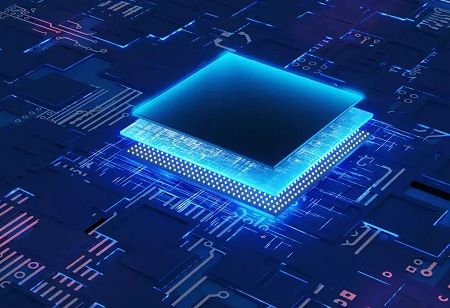
India Should Focus on Semiconductor Design, Says Lip-Bu Tan

 India has the potential to become a major player in the next semiconductor wave, thanks to its human capital driving technology giants like Intel, Qualcomm, and Nvidia, said Lip-Bu Tan, Chairman of Walden International. However, Tan emphasized that India should focus on chip design rather than fabrication, which is capital-intensive and risky without long-term customers.
India has the potential to become a major player in the next semiconductor wave, thanks to its human capital driving technology giants like Intel, Qualcomm, and Nvidia, said Lip-Bu Tan, Chairman of Walden International. However, Tan emphasized that India should focus on chip design rather than fabrication, which is capital-intensive and risky without long-term customers.
“Indian entrepreneurs are comfortable with outsourcing IT designs, but India is seen more as an outsourcing nation rather than a product nation. I always encourage companies to focus on purpose-built silicon”, Tan told. He suggested that India should create its own homegrown semiconductor brand.
During his visit to India for Anant Ambani’s wedding, Tan met with industry leaders and attended the launch of Yali Capital, India's first homegrown deep-tech venture fund emphasizing chip design. Tan will serve as the fund’s anchor investor and advisor.
Tan’s visit comes at a time when semiconductor chips have become crucial geo-strategic tools in an AI-driven, post-Covid world. The global tech race between the US and China has heightened the importance of semiconductor supply chains. Despite the complexity of these chains, Tan sees India as a potential semiconductor hub, especially for companies like Apple, which are looking to reduce their dependence on China.
India’s semiconductor landscape has seen significant developments with the launch of the India Semiconductor Mission. Companies like the Tatas, Murugappa Group, and America’s Micron have pledged nearly $18 billion to build chip design, fabrication, assembly, testing, and packaging units. Global giants like Tower Semiconductors, Foxconn, AMD, and Kaynes Technology, along with domestic companies like HCL and L&T, are also boosting India’s semiconductor design and fabrication efforts.
However, Tan cautioned that building fabs is complex and requires robust infrastructure, consistent power, and water. “If I were to do fab, I would start with mixed signal, power management, and image sensors those have volumes and don’t need leading-edge processors”, he said. Leading-edge node processing foundries are expensive and risky without committed customers.
Tan emphasized that India needs to become the lowest-cost producer while maintaining advanced technology to attract top customers. “Apple is a big win. They are committed to diversifying out of China. Otherwise, customers will shop around for the best cost”, he added.
Tan’s influence in the semiconductor industry is notable. As the former CEO of Cadence Design, he transformed the near-bankrupt US chip design company into a $52 billion colossus in 13 years. As the founder chairman of Walden International, he backed Asian tech challengers in the mid-90s, profiting as many of his bets listed at a premium or were acquired by top global corporations.
Looking ahead, Tan sees several growth drivers for deep tech, including 5G and 6G mobility, hyperscale computing, cloud, automotive, edge AI, and industrial IoT. These advancements could help the semiconductor industry reach a $1 trillion valuation before 2030. Nvidia’s market value is already at $3.8 trillion.
Despite the industry’s growth, Tan expressed concerns about its environmental impact. It is estimated that 20% of the global electricity supply will be needed to power data centers alone. “The world underestimated the power requirement by four times. Processors are extremely power-hungry”, he said. Tan highlighted the need for innovations in power management, cloud infrastructure, memory, and cooling technologies to prevent shortages.
As India positions itself in the global semiconductor landscape, Tan’s insights and strategic advice could prove invaluable in navigating the complex and competitive industry.